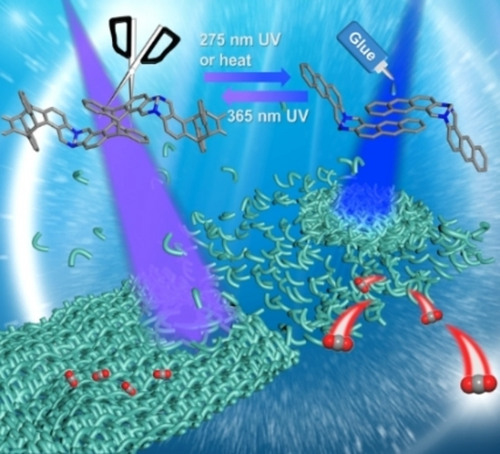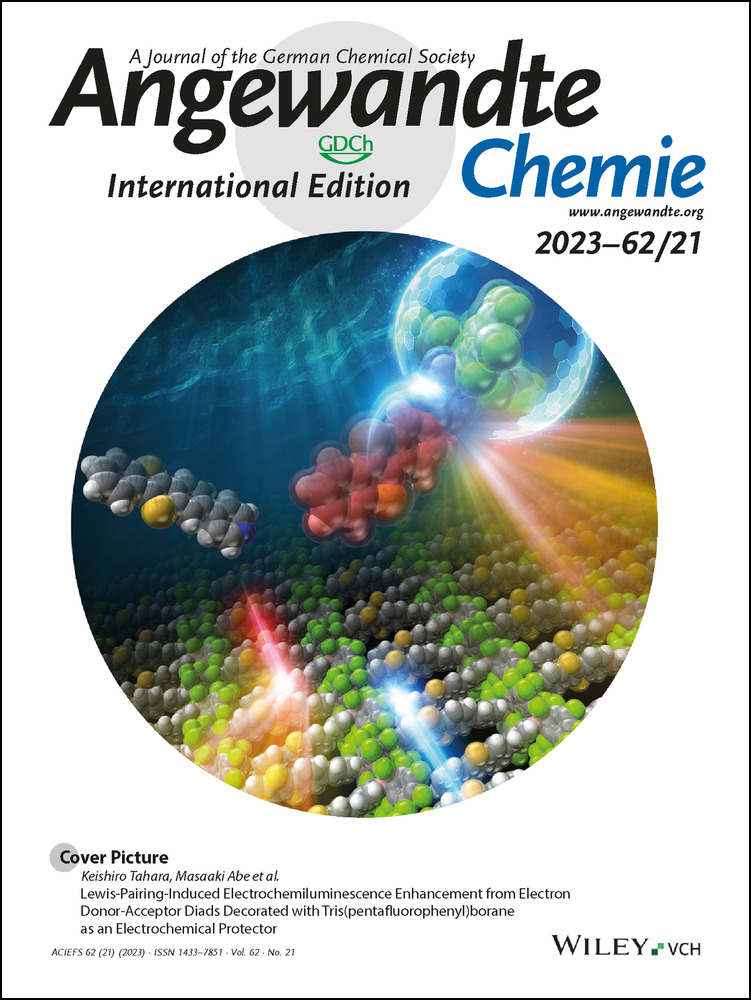Detachable Porous Organic Polymers Responsive to Light and Heat
Graphical Abstract
A new type of stimuli-responsive porous material was prepared based on the detachment mechanism. The detachable porous polymer, namely DT-POP-1, was fabriated by the polymerization of anthracene-containing monomer with 365 nm UV light and it can detach into the monomer upon irradiation with 275 nm UV light or heat. The detachment results in a large difference in porosity and adsorption capacity.
Abstract
Stimuli-responsive porous materials have captured much attention due to the on-demand tunable properties. Most reported stimuli-responsive porous materials are based on molecule isomerism or host-guest interaction, and it is highly desired to develop new types based on different responsive mechanism. Herein, inspired by natural cells which have the ability to fuse and divide induced by external stimulation, we report a new type of stimuli-responsive porous material based on detachment mechanism. A detachable porous organic polymer, namely DT-POP-1, is fabricated from the polymerization of anthracene-containing monomer (AnMon) when irradiated by 365 nm UV light. DT-POP-1 can detach into the monomer AnMon when irradiated with 275 nm UV light or heat. Such polymerization/detachment is reversible. The detachment results in a big difference in porosity and adsorption capacity, making the present detachable porous polymer highly promising in adsorptive separation and drug delivery.
Conflict of interest
The authors declare no conflict of interest.
Open Research
Data Availability Statement
The data that support the findings of this study are available from the corresponding author upon reasonable request.





